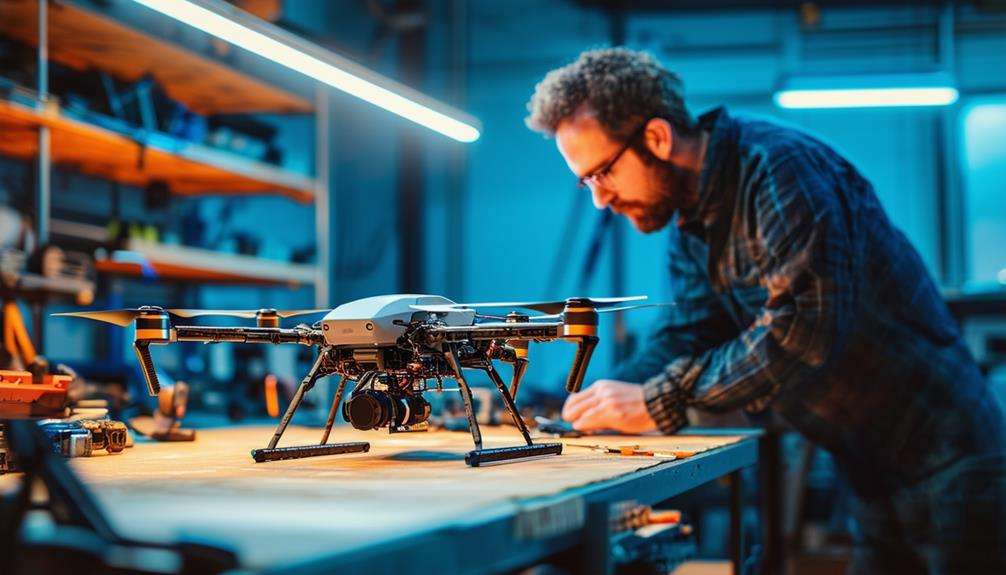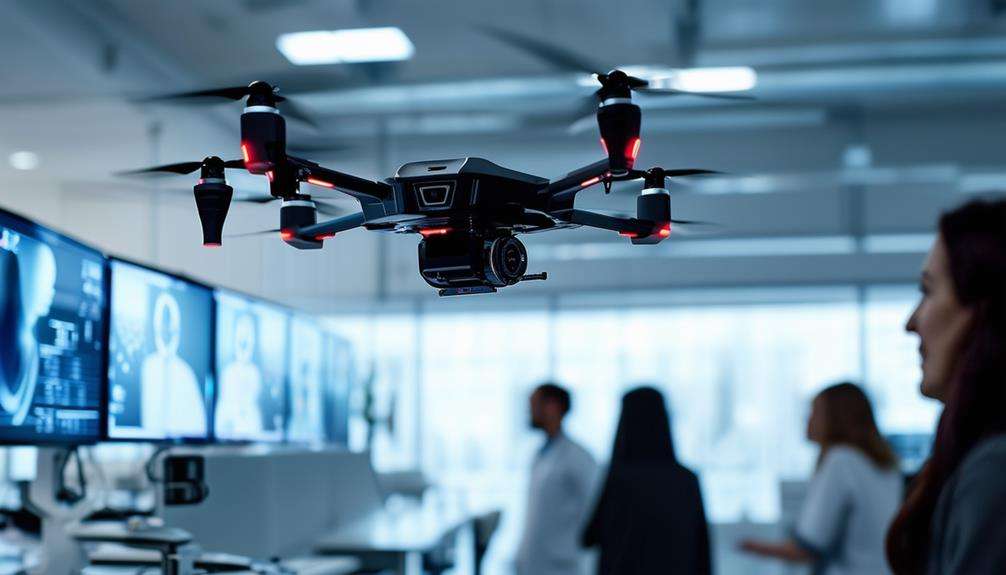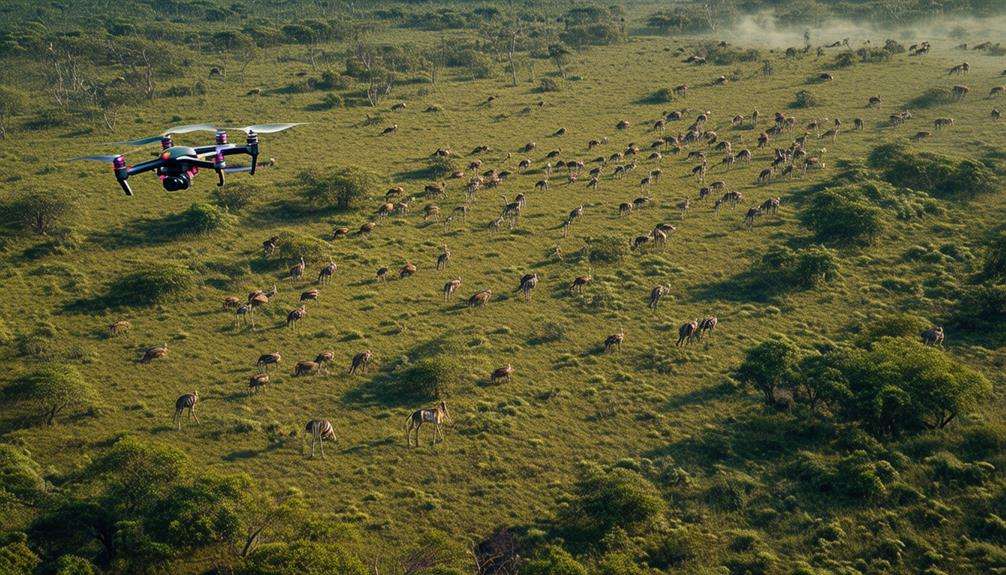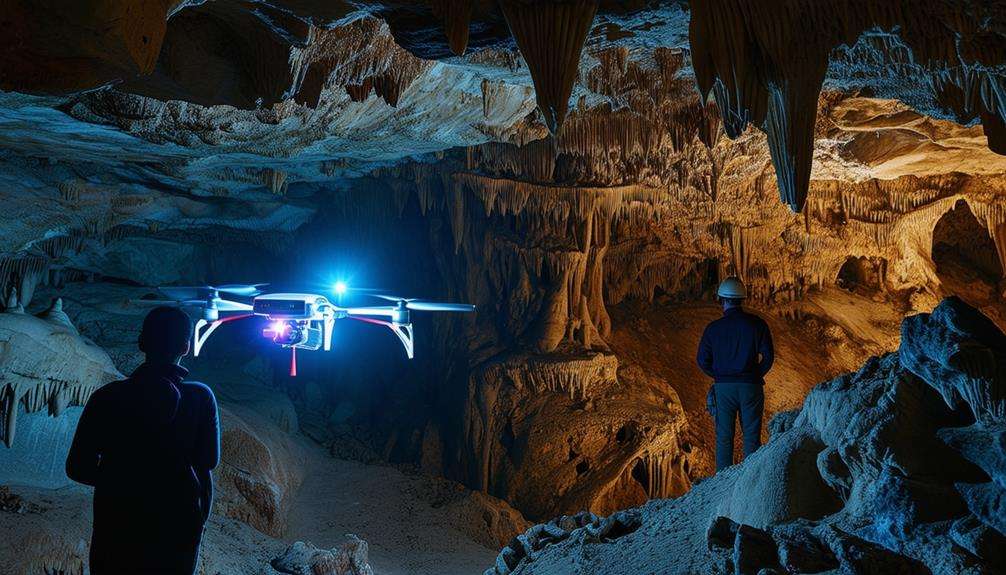What Happens if a Drone Goes Out of Range?
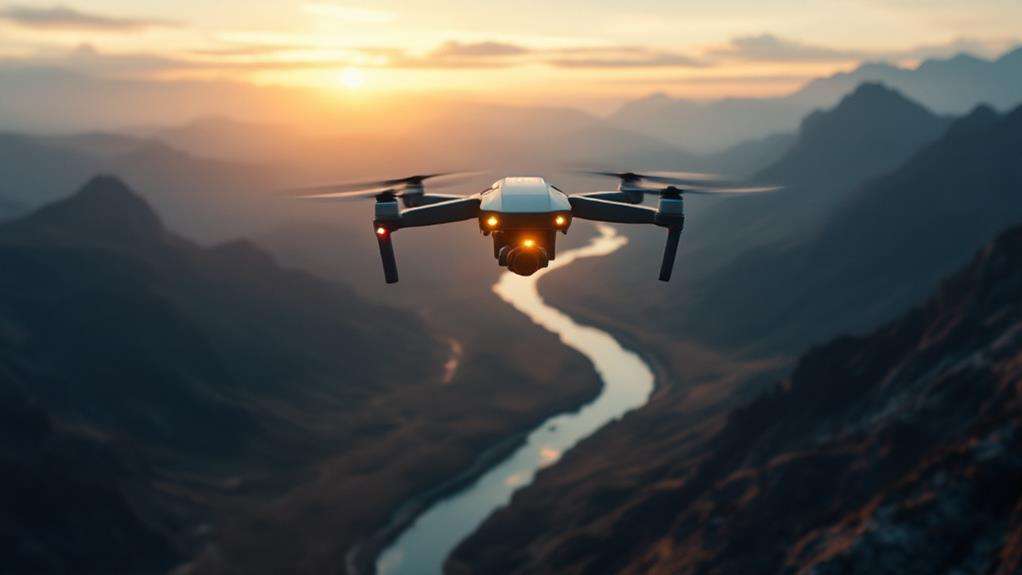
If your drone goes out of range, it usually triggers a failsafe, activating the Return to Home (RTH) feature after about 11 seconds of signal loss. The drone attempts to reconnect by retracing its path, flying backward up to 50 meters before heading home. If it's within 20 meters of its starting point, it hovers until the signal is regained. Drones rise to a set altitude to dodge obstacles while returning. As it reaches home, it lands automatically but you can regain control anytime during RTH. Factors like weather and environmental conditions can affect this process; there's much more to understand.
Key Takeaways
- Drones activate the Return to Home (RTH) feature after 11 seconds of signal loss to ensure safe retrieval.
- Advanced drones attempt to reconnect by retracing their path, flying backward 50 meters before initiating RTH.
- If within 20 meters of the Home Point, drones hover until connection is regained instead of returning.
- Environmental factors like buildings, trees, and weather can interfere with signal, impacting drone stability and navigation.
- Manual control may be necessary if RTH fails, with operators moving closer to re-establish connection.
Drone Communication Loss
When your drone ventures beyond its communication range, it might lose contact with the remote controller, triggering a failsafe protocol. This drone communication loss initiates a series of automated responses to ensure its safe retrieval. Most modern drones are equipped with a Return to Home feature that kicks in after about 11 seconds of signal loss. The drone will attempt to fly back to its last recorded home point. If the signal isn't regained, the drone will continue this course. It's essential to be mindful of local regulations that may affect your drone's operation, particularly if flying in areas with additional restrictions. In some instances, your drone might try to re-establish the connection by flying backward for around 50 meters. If the signal is recovered during this maneuver, you'll regain control. However, if your drone is within 20 meters of the home point when the signal loss occurs, it will hover in place instead of proceeding with a return flight. This ensures a more secure response without unnecessary movement. Drones without advanced signal recovery features might not fare as well. They can descend uncontrollably, risking damage or loss. Additionally, factors like battery life are crucial in determining whether the drone can execute a controlled landing or safely return home, stressing the importance of keeping battery levels in check.
Automatic Return to Home
Losing communication with your drone doesn't have to spell disaster, thanks to the Automatic Return to Home (RTH) feature. It's essential to have a disciplined study regimen to ensure you are well-prepared for any scenario. When your remote controller loses signal, the RTH feature kicks in after about 11 seconds without connection. At first, your drone attempts to re-establish a connection by retracing its original flight path, flying backward for 50 meters. This smart maneuver gives the signal a chance to reconnect. If the connection remains lost, your drone then ascends to a predefined RTH altitude, which you should set before your flight to ensure safety.
Once at the proper altitude, the drone heads back to the Home Point. This is a vital step, as it guides the drone safely back to its starting location. Upon arrival, it will automatically land and stop its motors once it safely touches down. You have the power to regain control at any point during the return flight, should you wish to cancel the RTH procedure. This feature not only preserves your drone's integrity but also boosts your confidence in piloting, knowing that even if the signal falters, your drone has a reliable path home.
Signal Recovery Techniques
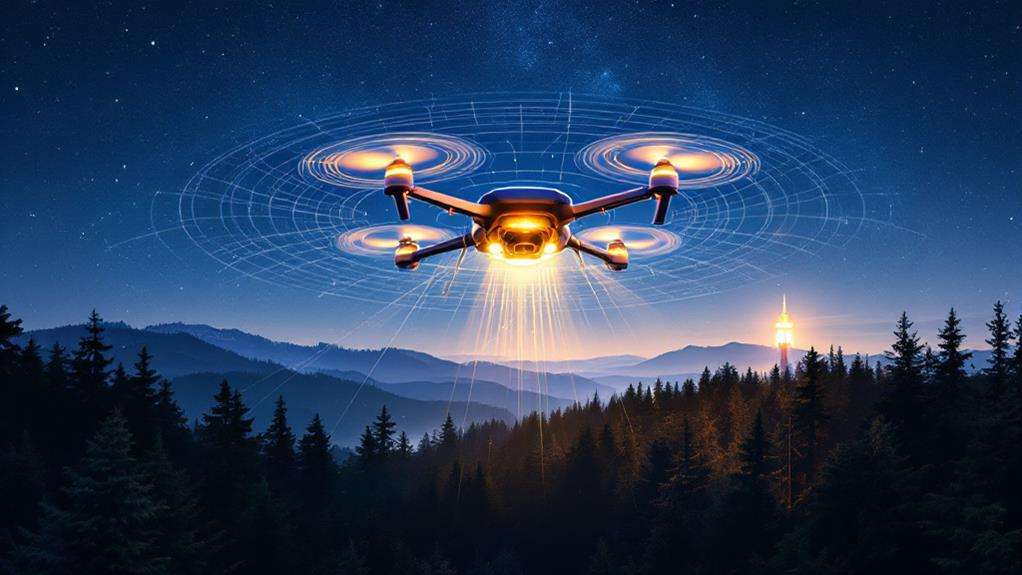
Signal recovery techniques can significantly boost your drone piloting experience by minimizing disruptions caused by signal loss. When your drone goes out of range, advanced models are designed to handle these situations gracefully. They employ features like Return to Home (RTH) to automatically navigate back to a safe location. If a signal is lost for about 11 seconds, the drone attempts to reconnect before activating the RTH protocol. This ensures that even when out of range, your drone is not at immediate risk.
Advanced drones often come with failsafe features that allow them to hover in place or execute controlled maneuvers, such as ascending to a user-defined altitude, to prevent accidents. These drones are equipped with robust transmission systems, including enhanced antennas and signal boosters, to maintain a stable connection. By upgrading your transmission systems, you can significantly improve signal recovery and prevent signal loss.
During the RTH process, if the drone is within 20 meters of the Home Point, it will hover in place until the connection is reestablished. If it's farther, the drone will fly backward for 50 meters, providing additional time to regain control.
Potential Crash Scenarios
An out-of-range drone without advanced fail-safe features poses a significant risk of crashing. When a drone goes beyond its signal strength and loses connection with the controller, it can enter a state of uncontrolled descent. Drones without RTH capabilities are at an even greater risk during signal loss. Without the ability to Return to Home, these drones might hover in place until their battery depletes, leading to a potential crash if they land in unsuitable areas.
For drones equipped with Return to Home, this feature activates after a predefined period, usually 11 seconds, allowing them to autonomously navigate back to their takeoff point. However, for those lacking GPS navigation systems, the absence of location awareness increases the likelihood of a mishap, as they have no means to safely navigate back.
Some drones attempt to mitigate signal loss by flying backward along their original path for about 50 meters before initiating RTH if the signal doesn't recover. Yet, without advanced fail-safes, these measures might not be enough to prevent a crash. Understanding these potential crash scenarios highlights the importance of investing in drones with comprehensive safety features.
Manual Recovery Options
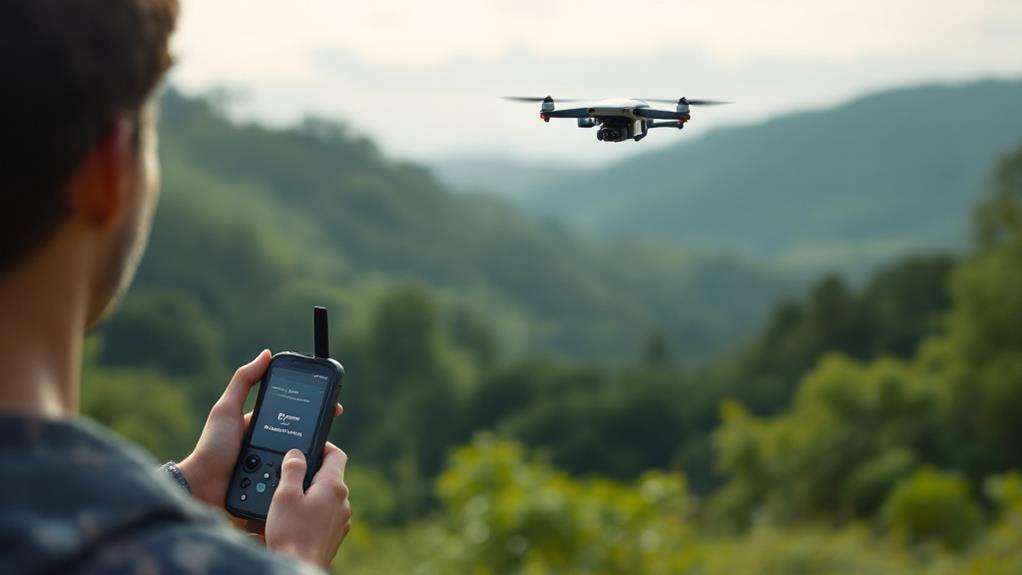
Sometimes, when a drone goes out of range, you'll need to take matters into your own hands to regain control. If the drone lacks advanced features, it might simply stop responding due to signal loss, risking a crash. As a drone operator, understanding your drone's control ranges and communication range is crucial. Many modern drones come equipped with a Return to Home (RTH) function that automatically kicks in once the signal is lost, guiding the drone back to its designated Home Point. However, manual recovery might still be necessary if the RTH doesn't activate.
In cases where your drone hovers after losing signal, moving closer to its last known location can help re-establish a connection. Once the signal is regained, you can use manual control to guide the drone safely to the ground. Familiarity with your drone's failsafe settings and RTH behavior is essential for effective manual recovery. Always ensure that your Home Point is correctly set before flight. By understanding these manual control techniques, you can manage out-of-range situations more effectively and prevent potential crashes or loss of your drone.
Failsafe Features Explained
Understanding how a drone behaves when it loses connection is vital for any operator. When drones go out of range, they activate a crucial failsafe feature called Return to Home (RTH). This feature automatically directs the drone to its pre-recorded Home Point. RTH typically kicks in after about 11 seconds of signal loss. During this time, the drone will try to reconnect by flying backward along its last flight path for 50 meters. If it still can't re-establish the connection, the drone will ascend to a pre-set RTH altitude. This ensures it avoids any obstacles on its way back.
Once it reaches the Home Point, the drone will land automatically, cutting its motors once safely on the ground. This entire process is designed to minimize risks and ensure the safe return of your drone. Additionally, many modern drones come equipped with smart notifications. These alerts keep you informed about the drone's out-of-range status and the activation of the RTH procedures. By understanding these failsafe features, you can fly with more confidence, knowing your drone is equipped to handle unexpected signal loss efficiently.
Impact of Environmental Factors
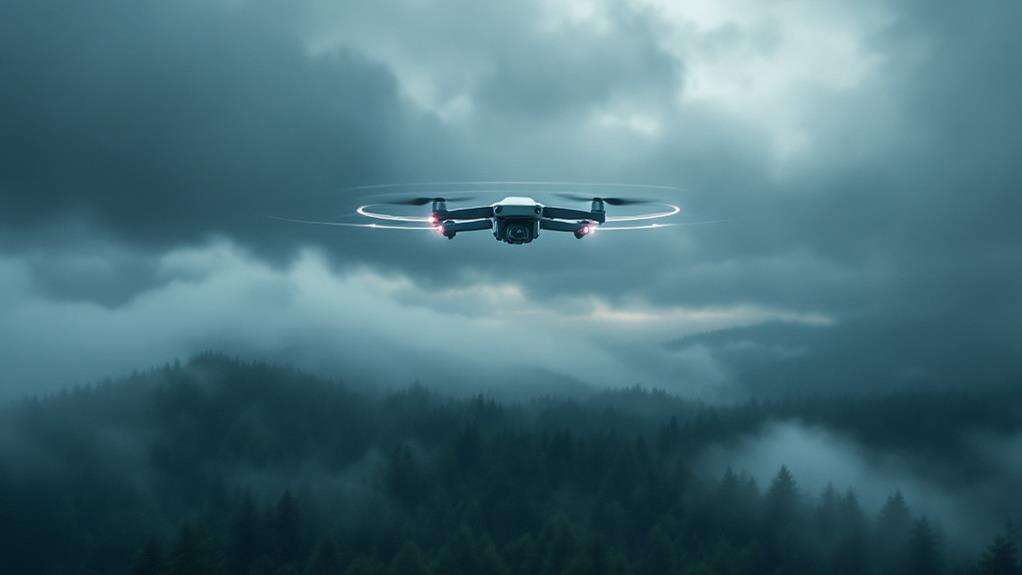
Navigating the skies comes with its challenges, especially when environmental factors come into play, impacting your drone's performance. Wind speed is a crucial factor; most consumer drones operate efficiently in winds up to 15-20 mph (24-32 kph). Beyond this, your drone's operational range might suffer, as it struggles to maintain stability. Adverse weather conditions like rain, snow, or fog can impair navigation systems and signal transmission, making safe operation difficult.
Consider this table illustrating how various environmental factors affect drones:
| Environmental Factor | Impact on Drones |
|---|---|
| Wind Speed | Affects operational stability |
| Adverse Weather | Impairs navigation and signal |
| Temperature Variations | Reduces battery life |
High altitudes present another challenge, where lower air density can reduce battery efficiency, thus affecting flight range. Temperature variations, particularly in cold conditions, can drain batteries faster, reducing both flight duration and range.
In urban areas, interference from buildings and electromagnetic signals can further limit your drone's operational range. Such interference can reduce signal strength, impacting stability and control. To ensure optimal performance, understanding these environmental factors is essential, allowing you to navigate these challenges effectively and enhance your drone's operational capabilities.
Legal and Safety Implications
When your drone ventures out of range, the risk of losing control becomes a significant concern, raising both legal and safety issues. If a drone goes out of range and loses its connection with the remote control, it might enter an uncontrolled flight, posing safety risks to people and property. Fortunately, most modern drones come with Return to Home (RTH) features that guide them back to a safe location when communication systems fail.
Legally, you're obligated to maintain a Visual Line of Sight (VLOS) with your drone. The FAA mandates this to minimize safety risks, such as collisions with other aircraft or structures, particularly in controlled airspace. Flying beyond this range without proper authorization constitutes a regulatory violation, which can lead to fines or penalties. It's crucial to recognize that unauthorized Beyond Visual Line of Sight (BVLOS) operations can result in serious legal consequences, including the possibility of losing your flying privileges.
To avoid these issues, always ensure your drone operates within its designated range and follow all legal restrictions. Understanding and adhering to these regulations helps you maintain safe and lawful drone operations, preventing unwanted legal and safety complications.
Enhancing Drone Range and Safety
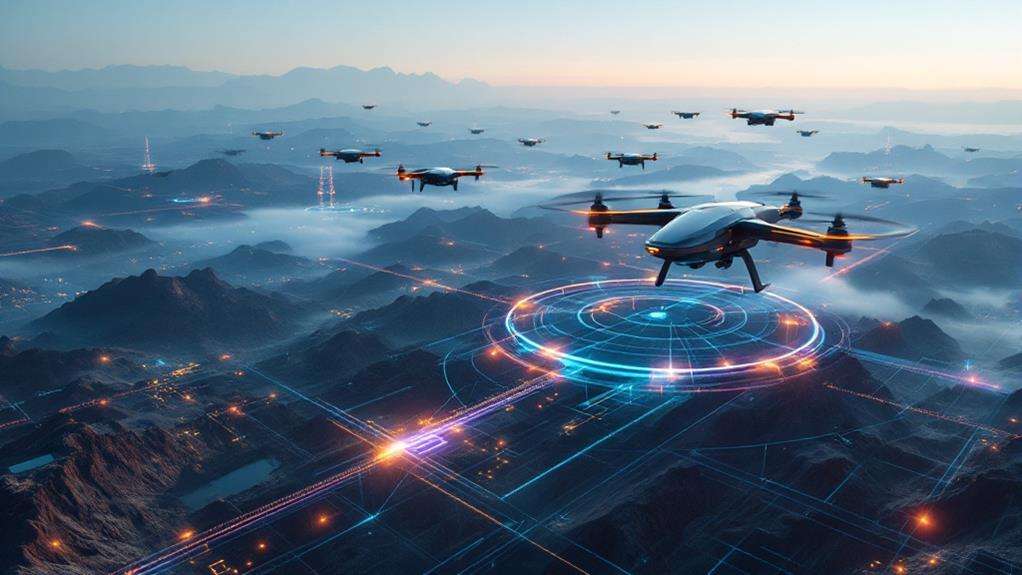
To enhance your drone's range and safety, consider upgrading to higher-capacity batteries, which can extend flight time and allow for longer missions. This upgrade boosts operational range by providing more battery power, letting you maintain control over greater distances. Implementing signal enhancement technologies like directional antennas can further improve communication stability, ensuring your drone doesn't lose connection mid-flight.
| Strategy | Benefit |
|---|---|
| Higher-capacity batteries | Increased flight time |
| Signal boosters | Enhanced communication stability |
| Optimize design | Reduced unnecessary payload |
| Smooth flight patterns | Conserved battery power |
Reducing unnecessary payload through optimized design enhances efficiency, allowing for a longer operational range. By minimizing weight, your drone can achieve a greater flight distance without compromising performance. Employing smooth flight patterns and avoiding abrupt maneuvers helps conserve battery power, maximizing the drone's range during missions. Regular firmware updates and maintenance are essential to ensure optimal performance and reliability, critical for preventing control loss due to range issues.

